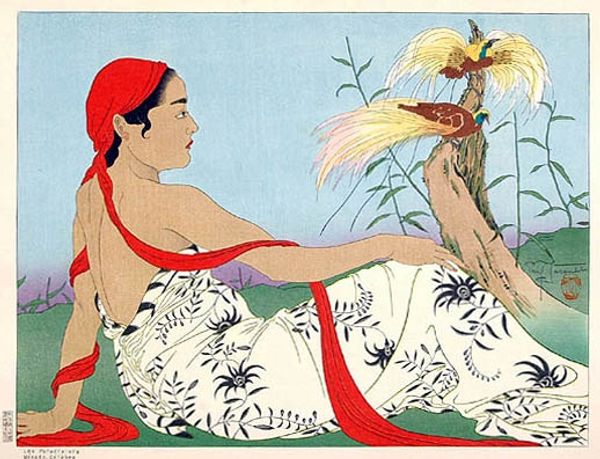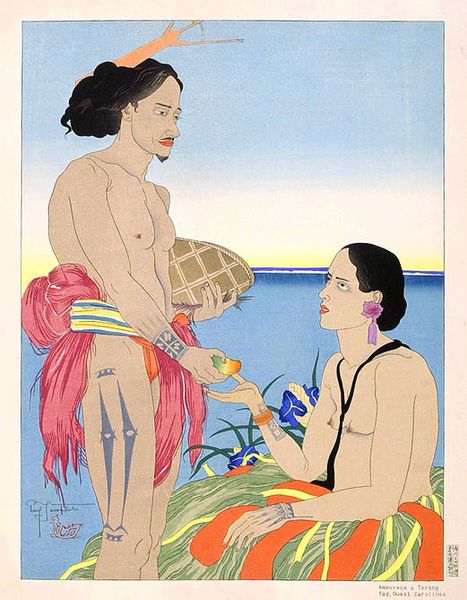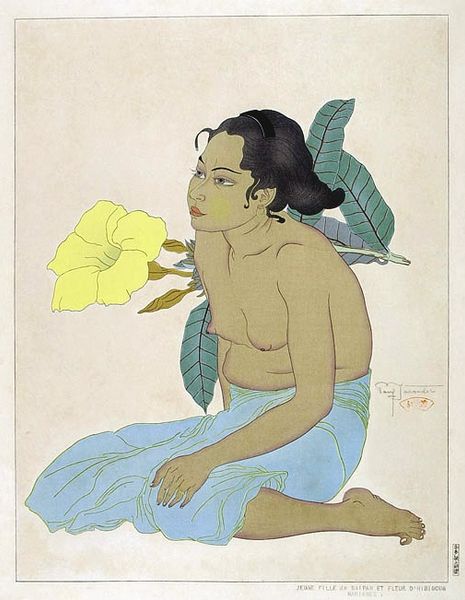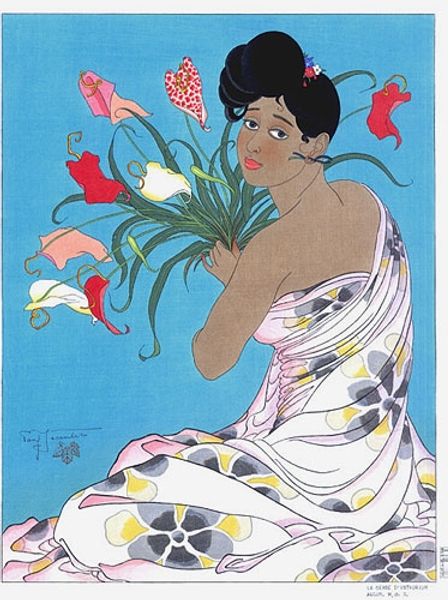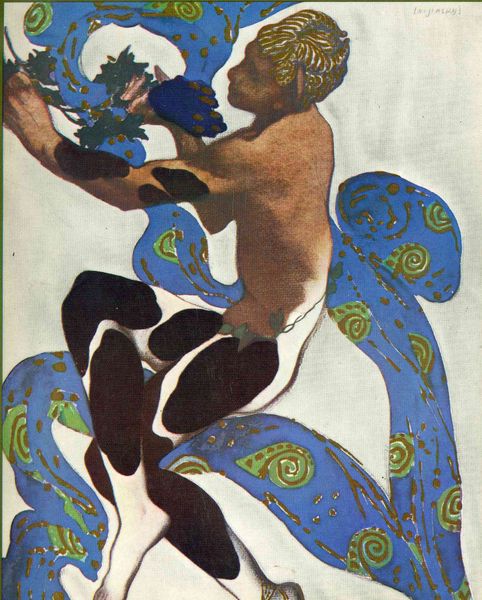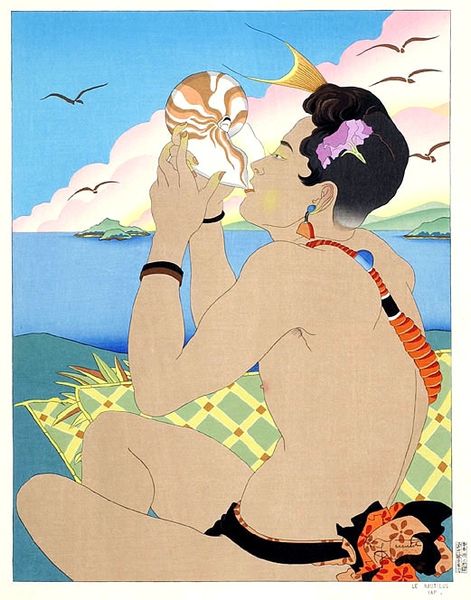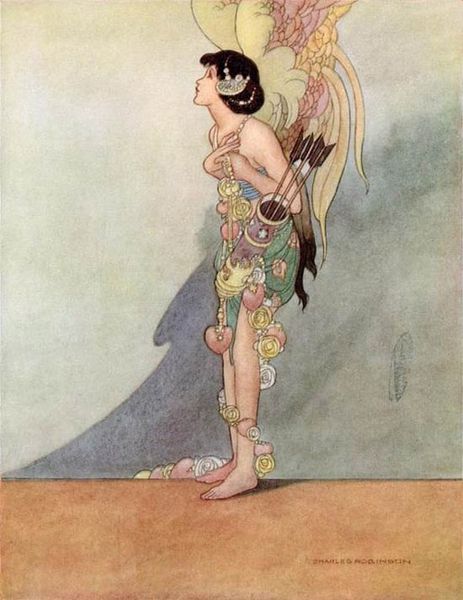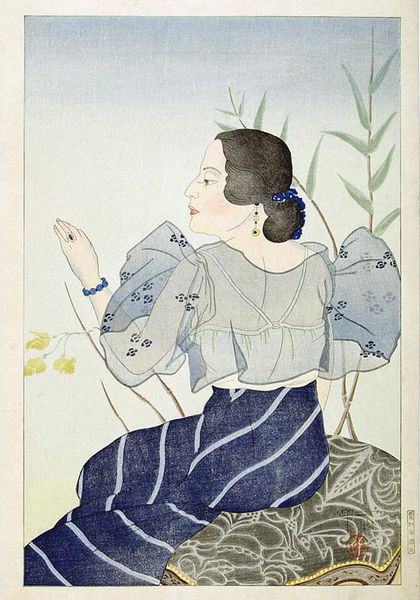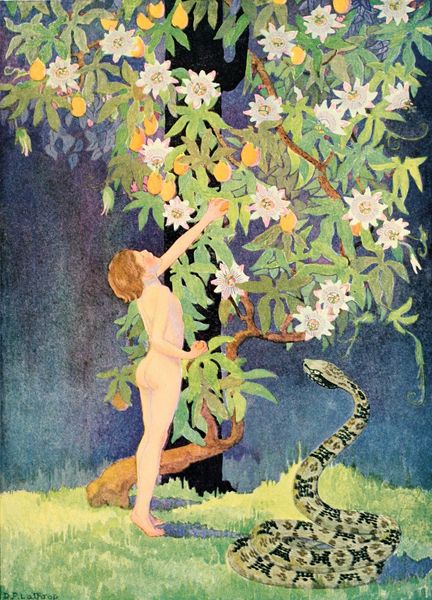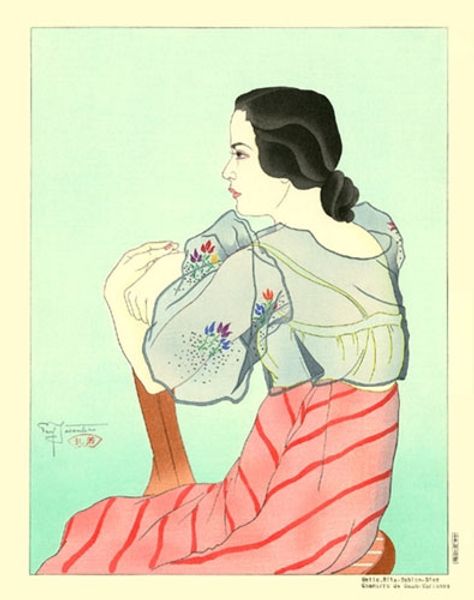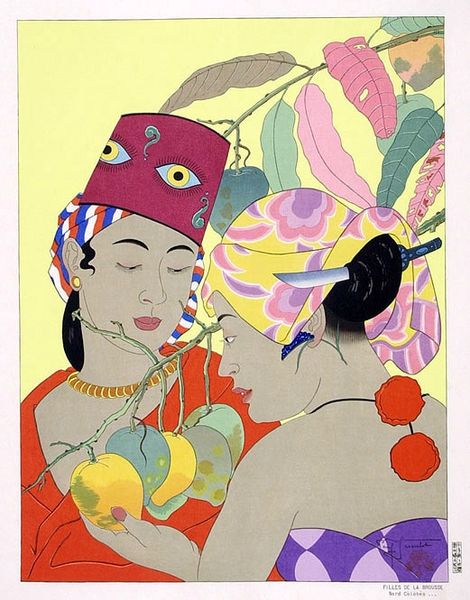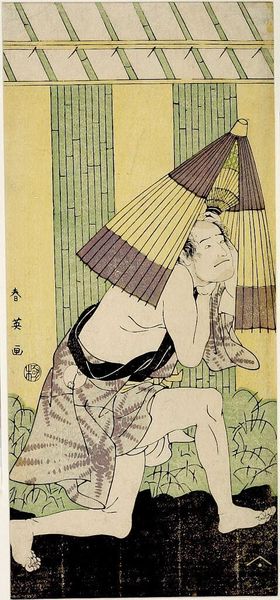
Copyright: Public domain Japan
Editor: This is Paul Jacoulet's "Les Papillons Tropiques," a print from 1939. It strikes me as quite an unusual composition, a nude woman, flowers, and butterflies. It feels very much in a kind of Ukiyo-e tradition. What draws your eye when you look at it? Curator: What grabs me is the intersection of Jacoulet's technique with the market forces at play. Consider the painstaking process of Ukiyo-e printing, demanding skilled artisans to carve blocks for each colour. And then look at Jacoulet’s audience, mostly Westerners eager to consume exotic imagery. This tension reveals a lot about labor, value, and the circulation of culture. Editor: That's a perspective I hadn't considered. So you're saying the *making* of the artwork and *who* it was made for is more important than the woman or the butterflies? Curator: Absolutely! Think about the materials – the paper, the inks, the woodblocks. Where did they come from? Who made them? Each element represents labor and a network of economic relationships that brought this image into being. The consumption of that image continues that network, by a wealthy elite who find pleasure or status in its possession. It begs the question, where is the place of 'fine art' when divorced from the conditions of its production? Editor: That's fascinating. I guess I was focusing too much on the subject matter. This print really shows the link between art, labour, and the exotic, doesn't it? I see now, it’s more about the systems behind the art than simply the art itself. Curator: Precisely. Analyzing these systems lets us re-evaluate value.
Comments
No comments
Be the first to comment and join the conversation on the ultimate creative platform.

